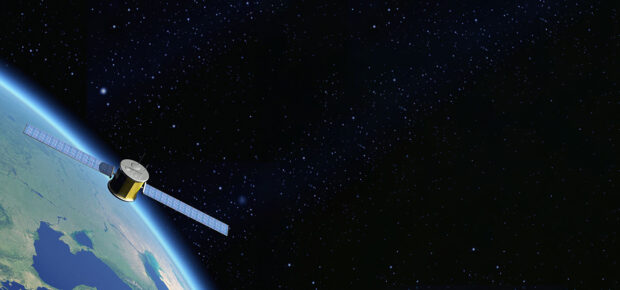August 20, 2020
Sometimes stepping back and looking at the bigger picture is the key to helping us understand and solve problems in the most efficient way possible. NASA’s Earth Observing Systems (EOS) are being used in space to help monitor and analyze the health of Earth’s atmosphere and environment from an all-encompassing view.
“Developments in these technologies help us understand the world better,” says IEEE Fellow Tom Coughlin. “Satellites allow us to capture a holistic understanding of the Earth that could not easily be achieved on the Earth’s surface. This additional knowledge will allow us to better manage and understand our impact on the environment.”
NASA’s EOS project helps the scientific research community study land surface, biosphere, solid Earth, atmosphere and oceans long-term through polar-orbiting and low inclination satellites. NASA currently has 28 satellites orbiting Earth to study various environmental patterns and collect valuable data for researchers. Since the first launch in 1999, EOS technology has been a guiding solution to help us understand how to effectively heal the planet.
“One of the most impactful applications of space technology is how it has been applied to Earth Observing Systems to monitor the health of the Earth’s atmosphere and environment,” says IEEE Fellow Karen Panetta. “For instance, using LIDAR in space, data was collected on the amounts of aerosol pollutants in the atmosphere around the Earth and tracked the disbursement of these pollutants over the Earth, as well as which countries the pollutants originated from. Another mission looked at the effect of ozone depletion and found correlations to cancers in amphibians and fish where the ozone layer was depleted.”
EOS satellites are built with a specific purpose and environmental focus. Examples include AQUA, which gathers 89 Gigabytes of data a day on energy fluxes, aerosols, vegetation cover on the land, phytoplankton in the oceans and tracks air, land and water temperatures; or the spacecraft DSCOVR, that observes and measures radiation reflected and emitted by the sunlit side of Earth; and CLOUDSAT, which studies the clouds for improved weather accuracy and climate prediction.
Panetta also says “these kinds of missions help bring robust validated data that is essential to informing the public and convincing governments and agencies to take action.” This type of data collection is crucial to gather if we want to focus on correcting our current environmental pain points and create new technologies that protect Earth’s natural and limited resources.





 Meaningful Momentum or Running in Place?
Meaningful Momentum or Running in Place? AI Through Our Ages
AI Through Our Ages Liquid Infrastructure: Our Planet's Most Precious Resource
Liquid Infrastructure: Our Planet's Most Precious Resource The Impact of Technology in 2025
The Impact of Technology in 2025 Quantum and AI: Safeguards or Threats to Cybersecurity?
Quantum and AI: Safeguards or Threats to Cybersecurity? Why AI Can't Live Without Us
Why AI Can't Live Without Us Bits, Bytes, Buildings and Bridges: Digital-Driven Infrastructure
Bits, Bytes, Buildings and Bridges: Digital-Driven Infrastructure Impact of Technology in 2024
Impact of Technology in 2024 Emerging AI Cybersecurity Challenges and Solutions
Emerging AI Cybersecurity Challenges and Solutions The Skies are Unlimited
The Skies are Unlimited Smart Cities 2030: How Tech is Reshaping Urbanscapes
Smart Cities 2030: How Tech is Reshaping Urbanscapes Impact of Technology 2023
Impact of Technology 2023 Cybersecurity for Life-Changing Innovations
Cybersecurity for Life-Changing Innovations Smarter Wearables Healthier Life
Smarter Wearables Healthier Life Infrastructure In Motion
Infrastructure In Motion The Impact of Tech in 2022 and Beyond
The Impact of Tech in 2022 and Beyond Cybersecurity, Technology and Protecting Our World
Cybersecurity, Technology and Protecting Our World How Technology Helps us Understand Our Health and Wellness
How Technology Helps us Understand Our Health and Wellness The Resilience of Humanity
The Resilience of Humanity Harnessing and Sustaining our Natural Resources
Harnessing and Sustaining our Natural Resources Creating Healthy Spaces Through Technology
Creating Healthy Spaces Through Technology Exceptional Infrastructure Challenges, Technology and Humanity
Exceptional Infrastructure Challenges, Technology and Humanity The Global Impact of IEEE's 802 Standards
The Global Impact of IEEE's 802 Standards Scenes of our Cyber Lives: The Security Threats and Technology Solutions Protecting Us
Scenes of our Cyber Lives: The Security Threats and Technology Solutions Protecting Us How Millennial Parents are Embracing Health and Wellness Technologies for Their Generation Alpha Kids
How Millennial Parents are Embracing Health and Wellness Technologies for Their Generation Alpha Kids Space Exploration, Technology and Our Lives
Space Exploration, Technology and Our Lives Global Innovation and the Environment
Global Innovation and the Environment How Technology, Privacy and Security are Changing Each Other (And Us)
How Technology, Privacy and Security are Changing Each Other (And Us) Find us in booth 31506, LVCC South Hall 3 and experience the Technology Moon Walk
Find us in booth 31506, LVCC South Hall 3 and experience the Technology Moon Walk Virtual and Mixed Reality
Virtual and Mixed Reality How Robots are Improving our Health
How Robots are Improving our Health IEEE Experts and the Robots They are Teaching
IEEE Experts and the Robots They are Teaching See how millennial parents around the world see AI impacting the lives of their tech-infused offspring
See how millennial parents around the world see AI impacting the lives of their tech-infused offspring Take the journey from farm to table and learn how IoT will help us reach the rising demand for food production
Take the journey from farm to table and learn how IoT will help us reach the rising demand for food production Watch technical experts discuss the latest cyber threats
Watch technical experts discuss the latest cyber threats Explore how researchers, teachers, explorers, healthcare and medical professionals use immersive technologies
Explore how researchers, teachers, explorers, healthcare and medical professionals use immersive technologies Follow the timeline to see how Generation AI will be impacted by technology
Follow the timeline to see how Generation AI will be impacted by technology Learn how your IoT data can be used by experiencing a day in a connected life
Learn how your IoT data can be used by experiencing a day in a connected life Listen to technical experts discuss the biggest security threats today
Listen to technical experts discuss the biggest security threats today See how tech has influenced and evolved with the Games
See how tech has influenced and evolved with the Games Enter our virtual home to explore the IoT (Internet of Things) technologies
Enter our virtual home to explore the IoT (Internet of Things) technologies Explore an interactive map showcasing exciting innovations in robotics
Explore an interactive map showcasing exciting innovations in robotics Interactively explore A.I. in recent Hollywood movies
Interactively explore A.I. in recent Hollywood movies Get immersed in technologies that will improve patients' lives
Get immersed in technologies that will improve patients' lives